
Wine Culture and Information since 2002 - Volume 22
 Wine Culture and Information since 2002 - Volume 22 |
|
Issue 111, October 2012 |
Contents |
|
|
DiWineTaste: Tenth Year, Eleventh Year |
|
October 2002, October 2012. Ten years have passed, we are about to enter our eleventh year of activity. We walked a long way, and we have to walk a lot more: there is still a long road ahead. I am very proud for what we have done so far, while being aware it is just one “stage” of this journey, a reason for new challenges, new things to do, while looking forward and trying to grow up the experience and the emotions which have accompanied us so far. In this moment, it is impossible not to think about that September 9th, 2002, when at 10:10PM, together with my friend Stefano Passerini, with a mouse click, DiWineTaste WEB site and the first issue of the magazine were officially brought to “life”, delivered to the immensity of Internet cyberspace. And it is also unavoidable to remember the toast following that moment: Marsala Vergine Baglio Florio 1987. A great wine - and great is Marsala indeed: whoever know me, also know my passion for this immense wine - made in the historical Florio winery, which was brought to life also thanks to the talent and remarkable wine making knowledge of my dear friend Carlo Casavecchia. Thanks Florio, thanks dear Carlo, my friend, that night you were here with us. In ten years, a short period of time for sure, however significant, have been happened many things, a lot of satisfactions and exciting challenges not always easy to face. I am into wine and enogastronomy - as well as tea, beer, coffee, cheese and olive oil - for more than 20 years now, an activity I ran together with my past software development business, now belonging to the past, also in this case very rich of remarkable satisfaction and success. I however did not abandon the activity of software developer - this is something I cannot help: I cannot live without writing computer programs, developing software, studying algorithms and operating systems - after all, if DiWineTaste was born this way and I made the choice, since the beginning, of distributing it on the Internet only, the choice was strongly dependent on my computer business, which however accompanied my life for 25 years. And it continues to do so, of course. After ten years I am still convinced the choice of publishing DiWineTaste on the Internet only was the right one. Result of my past computer business certainly is the Android application we published one month ago. A new way to access the contents and Guides available on our site, DiWineTaste Mobile is being quite successful and receiving the appreciation of our readers and Android users. Also in this case, there is still a long way to go, just like any other software project. The launch of the Android application has been followed by a flow or mails, both of appreciation from the ones who downloaded it and are using it, as well as “complains” from the other system's users for the fact they cannot use it on their phones. We are aware of your disappointment: don't be afraid, DiWineTaste Mobile will be available for other systems and devices as well, it is just a matter of time. On this regard, there will be many new things to come, as I personally believe Internet is an excellent way to spread wine culture, also by means of mobile devices, and this is one of our primary goals. In other words, we are entering our eleventh year by thinking about new challenges, new adventures. DiWineTaste Mobile, in case you did not download it yet, can be found at Google Play Store. In the first moments of DiWineTaste life, at the end of September 2002, our site - in just twenty-one days - counted the visit of about 1,600 wine lovers. What existed in that primordial stage of our job, today has grown up and changed in a way that, no doubt about this, we could not imagine. After ten years, that site has grown up, changed, totally transformed, enriched with new tools and services for our readers, today counting an average of 155,000 readers a month for the magazine only, divided between the WEB and PDF edition, both in Italian and English. The first remarkable change was introduced in February 2003, with the release of the “Wine Guide”, in which are found the reviews of all the wines tasted in ten years, at the moment of the writing of this text, there are more than 4,100 wines and more than 630 producers. All the wines have been singularly tasted and all rigorously tasted with the “blind tasting” method, the only I consider essential in order to ensure a reliable and trustworthy result, with no interference or influence. The WEB site receives its substantial job of restyling one year later, October 2003, with the release of new services, including the EnoGames, still today very successful among our readers, with an average number of 1,800 players each day. Meanwhile, we receive a growing appreciation from wineries, which send their wines to us, therefore allowing us to taste their products and to review them in the column “Wines of the Month” and in our Guide. The support and appreciation of wineries - small or big, famous or unknown - is growing up also thanks to the activity of event organization: monthly occasion for our readers, in which it is possible to personally meet the producers and their wines. I am in fact strongly convinced this is the most effective way to spread wine culture. We can talk about wine for months, even years, of its virtues and good quality, to make conjectures and suppositions, but as long as we do not uncork the bottle, pour it in a glass, smell it and listening to the story of a wine, we will never understand it fully. Ten years have just passed, many new challenges and new things are waiting ahead. I am watching to the things done so far and, despite the fact some of them - by considering facts - should have been done differently, I am however happy of this journey and the way we walked so far. I see the things done so far as one step of a journey, as the journey certainly is a long one, nothing is perfect and the “best” does not exist - I certainly am not such as well as not what we have done so far - but just things bringing other things, believing in patience and the humbleness of listening and growing up. For the moment, after ten years of hard work and with some good results achieved, I take a break - but only for a moment - and contemplate with satisfaction what we have done so far. It has been an amazing journey, generous of remarkable experiences, rich in new friendships, of mutual esteem, a lot of people who shared with me their experience of a life spent making wine. To make and live a wine with facts, every day, from vineyard to winery. From each of them I learnt a lot, each one of them gave me his or her way of seeing and telling a wine, vineyard, grapes and territories: treasures of endless value. And it is to all of them and to all of my reader that today, after ten years, I say thank you. If DiWineTaste has got so far, I also owe this, and in particular, to all of them and to all of you who are reading these words of mine. Happy tenth year, DiWineTaste! Antonello Biancalana
|
||||
A Matter of BalanceBalance is the fundamental factor determining organoleptic quality and agreeability of a wine, a fine line making the difference between a great wine and mediocre one |
|
Wine quality is the fundamental characteristic determining its agreeability. Pleasure, as such, is something hard to define, as it is strongly associated to the preference, culture, intelligence, interest and personal orientation of every subject. There however are factors and characteristics meeting the favor of many, in other words, there is pleasure which can be defined in an objective way, despite there can be, also in this sense, exceptions. As for wine, it could be said the evident and pungent fault which is usually perceived by a strong and clear smell and taste of vinegar, is defined as an unpleasing element by most of subjects, therefore, an objectively unpleasing quality. This does not exclude, in any case, the existence of subjects to whom the smell and evident taste of vinegar is pleasing and agreeable. Also in wine and not only in vinegar. De Gustibus Non Est Disputandum. (There is no dispute about taste) There are many factors determining quality in a wine and that are “objectively” accepted as fundamental, among the many, are mentioned olfactory and taste-olfactory persistence, the harmony among all the organoleptic aspects - therefore the overall harmony of wine - and balance. A wine with a short taste-olfactory persistence, certainly disappoints every wine lover: the evanescent flavor disappearing in few seconds, without leaving any memory in the mouth of the perceived flavors, is one of the factors making the wine belong, with no other chance, to the category of ordinary wines. The quality expressed by taste-olfactory persistence is not however determined by any flavor or organoleptic quality the wine gives senses. It is, of course, associated to the persistence of positive stimuli: the persistence of any possible bad taste or smell, simply worsen the judgment which can be given to a wine. A persistent and long flavor of vinegar in the mouth certainly is not the ideal characteristic for a quality wine. Beauty, as it is commonly known, is an extremely subjective quality, whether it is expressed by forms, colors, sounds or words, what can be defined as beautiful is something purely subjective, although the concept of beauty is frequently affected by cultural and social factors. Beauty certainly is not a concept associated to quantity: the saying “the more, the better” does not corresponds to the idea of beauty, indeed, to opulence. This is true for every aesthetical, sensorial or emotional expression - after all, taller people are not necessarily more beautiful than short people - and what makes the agreeability in something is the harmony of every factor making it. Small or big factors, important details and less important ones, in everything which can express the concept of beauty, they all express, in particular, the harmony of relations they have, in other word, they must simply look beautiful all together. This is, of course, easy to say, not so easy to achieve. Whether it is the expression of Nature or the talent of an artist, the lacking of harmony in what can be perceived makes the sensation not so pleasing or even unpleasing. This concept is also true for everything producing sensorial stimuli of olfactory or gustatory type, therefore food and, of course, wine. Beauty of a wine is not expressed by the category or style to which it belongs to - sweet, dry, sparkling, white, red or whatever it is - indeed by the relation of each factor, their quantity and how they are related one to each other. A very sweet wine cannot be considered as very good, also for subject who particularly like this taste, as tastiness - and therefore beauty - is the result of the relation between sweetness and all the other gustatory stimuli. The same, of course, is true for roundness, astringency, acidity and any other gustatory stimulus perceived during tasting.
In other words, the beauty of a wine is strictly connected to the harmony produced by every stimulus and of how they are balanced one to each other. This concept is not applied to the taste of wine only: balance is a factor also existing in aromas and aromatic qualities. A wine having a strong and pleasing aroma of peach, for example, could also result in a non very pleasing wine in case this would be the only aroma perceived to the nose. The wine would be, in other words, boring and dull, with no character or lively quality, incapable of producing a real and long lasting interest for the senses of the taster. A strong peach aroma - or any other aroma - without leaving room to other nuances, or other aromas, makes the aromatic profile of a wine ungraceful, with no olfactory balance. It would be the only actor in the scene in a too large stage and with no support, as to make it appear small, incapable of efficiently leading the scene and to catch the interest of the audience for a long time. However, this important aspect must not mask or change the organoleptic nature of a wine or a grape. A wine produced with aromatic grapes, such as Muscat Blanc or Gewürztraminer, must, in any case, expresses the typical and primary qualities that can make these grapes recognizable as such. It however will be the way in which these primary qualities are related to all the other ones to determine harmony and balance. The same is true for the gustatory quality of a wine. Also in this case the characteristic stimuli distinguishing a specific style must be fully expressed, however having in other stimuli and sensations the right balance in order not to make it ungraceful, boring and with no personality. This means that in white wines, acidity - the primary quality marking this style, frequently defined as crispness - must always be well perceptible however well supported, that is, balanced, by all the other gustatory characteristics making the wine. If it is true that in gustatory balance this condition happens with the opposition to specific categories of stimuli, olfactory balance does not have such strict rules. Balance in wine aromas is obtained both with aromas belonging to the same family - fruit, flowers, tertiary aromas and so on - as well as with aromas belonging to different families. This principle can be easily explained with the specific case of certain fortified wines in which what it is usually considered a fault, can be transformed into a noble quality. One of the characteristics distinguishing Marsala and Jerez is the aroma of oxidation, a quality which can certainly be considered as unpleasing, similarly to a fault, in any other wine. Nevertheless in these wines, besides being a wanted quality, it also becomes pleasing thanks to the balance created with all the other aromas, turning what can be a fault, into a noble quality. Also in these wines, oxidation, in case it is not balanced by other aromas, would be perceived as excessive and not very interesting. Likewise, an evident olfactory fault, will be less unpleasing - although remaining a fault to obfuscate the beauty of a wine - in case it is balanced by other aromas, in the effort of trying to balance its unpleasing presence. Nevertheless, even a fault, just like oxidation in some wines, can have a sort of charm in the olfactory profile, sometimes even improving it. It can be because of perfection, despite of its beauty, can sometimes end up being boring, even in an impeccable and perfect olfactory profile, and sometimes can be improved by what are universally considered as faults, such us a vinegar aroma of sulfur dioxide. In both cases, and when the intensity of their characteristic and pungent smell is kept at a very low level and however not evident, they can help improving the balance of aromas, moreover, they can also favor their perception and development. In case they are present in low levels and not evidently perceivable, both vinegar aromas and free sulfur dioxide, significantly contribute to the perception of aromas and, with their rough and offensive touch, can make the olfactory profile of a wine more interesting and lively. Balance of taste, as opposed to aromas, follows more rigid and strict rules, first of all, according to wine style. In general terms, gustatory balance in wine can be defined as the opposition of gustatory and tactile stimuli, in order to harmonically affect the relative perception of each one of them in a balanced way. Gustatory and tactile qualities defining balance in a wine are classified in soft and hard, ideally lined up in two opposing sides, like in two plates of the same scale. If this is true for the determination of balance in white wines, for reds the opposition becomes more complex because of the significant tactile role of astringency. Among soft components are included sweetness, roundness and alcohol, whereas in hard components are found acidity, astringency of tannins and the quantity of mineral elements contained in a wine. To these elements is also added the tactile effect of carbon dioxide, typical in sparkling and slightly sparkling wines. In white wines balance is mainly obtained by the agreeability of their dominant and characteristic: acidity. This quality, technically also called crispness, is the essential characteristic for every white wine and its absence, or scarcity, makes the wine flat and dull, excessively round. Likewise, the excess of acidity, or better to say, a non properly balanced acidity, makes the wine too sharp, and causing - among the many things - an excessive secretion of saliva in the mouth. Acidity, classified as a hard substance, is balanced thanks to the effect of round substances, such as alcohol, glycerin and roundness given by solid substances found in wine, as well as for the effect of the aging in cask. High quantity of acid substances requires high quantity of round substances in order to reach balance, in a contrast directly influencing the relative perception of each element. This means, for example, a very acid wine requires the presence of a high quantity of alcohol, creating a relation capable of lowering the relative perception of both. Among the main qualities which can be appreciated in red wines is found the astringency given by tannins, elements that, moreover, contribute to the structure of the wine together with other solid substances. Astringency is classified as a hard substance, therefore balanced by those classified as round, however, as for balance, it is considered as a category of its own. The reason is explained by the synergic effect the astringency produces together with other “hard” substances, including acidity. Astringency and acidity usually have a synergic effect and tend to mutually reinforce their effect. A red wine with a high acidity, will taste more astringent than what it really is. The same effect is produced by carbon dioxide which tends to accentuate astringency: a reason justifying the scarce existence of sparkling wines produced with red grapes and vinified in red. A very astringent wine - and eventually, very acidic, too - requires a high quantity of alcohol and round substances, including sweetness, in order to balance the effect of tannins. The same is true for the opposite condition: a very alcoholic wine, requires a proper astringency or acidity. Gustatory balance is the fundamental presupposition for every quality wine, a fundamental characteristic in order to get elegance. It is not in fact a single organoleptic quality to make a wine “great”; indeed, it is the relation existing in a glass, from nose to mouth, in order to obtain a harmonic relation, therefore, balance. Just like in an orchestra, besides the melody and the score, it is the harmony among the many parts and instruments to create a balanced and pleasing result. Elegance and agreeability are therefore fundamental factors for quality in a wine, a complex result of relationship among hard and round components, capable of giving emotions to the senses through the harmonic contribution of each element. Like already said, this result is not expressed in a quantitative way - the higher the acidity, sweetness, alcohol or astringency, does not mean a better balance or better wine - as what it is perceived is just the relative measure of every stimulus and the relation with others. In conclusion, in the determination of elegance and balance, everything is relative and nothing absolute.
|
||||||||||||
Wines of the Month |
|
|
|
Score legend Prices are to be considered as indicative. Prices may vary according to the country or the shop where wines are bought |
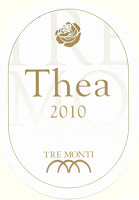
|
|
Thea Bianco 2010 |
|
| Tre Monti (Emilia Romagna, Italy) | |
| Grapes: Petit Manseng | |
| Price: € 19.00 | Score: |
| Thea Bianco shows an intense golden yellow color and nuances of golden yellow, very transparent. The nose denotes intense, clean, pleasing, refined and elegant aromas that start with hints of apple, plum and medlar followed by aromas of pineapple, jasmine, peach, honey, citrus fruits, pear and almond. The mouth has good correspondence to the nose, a crisp attack and however balanced by alcohol, good body, intense flavors, pleasing roundness. The finish is persistent with flavors of apple, medlar and plum. Thea Bianco ages in steel tanks. | |
| Food Match: Pasta with meat, Roasted fish, Roasted white meat, Mushroom soups | |
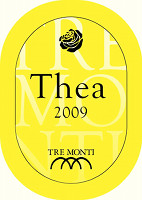
|
|
Sangiovese di Romagna Superiore Riserva Thea 2009 |
|
| Tre Monti (Emilia Romagna, Italy) | |
| Grapes: Sangiovese | |
| Price: € 19.00 | Score: |
| Sangiovese di Romagna Superiore Riserva Thea shows an intense ruby red color and nuances of ruby red, little transparency. The nose reveals intense, clean, pleasing, refined and elegant aromas which start with hints of black cherry, plum and violet followed by aromas of raspberry, blueberry, blackberry, vanilla, cyclamen, rose, tobacco, chocolate, cinnamon and menthol. The mouth has excellent correspondence to the nose, a properly tannic attack and however balanced by alcohol, full body, intense flavors, agreeable. The finish is very persistent with long flavors of black cherry, plum and blackberry. Sangiovese di Romagna Superiore Riserva Thea ages for 9 months in barrique. | |
| Food Match: Game, Roasted meat, Stewed and braised meat with mushrooms, Hard cheese | |
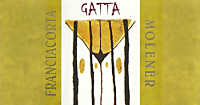
|
|
Franciacorta Extra Brut Molenèr 2005 |
|
| Gatta (Lombardy, Italy) | |
| Grapes: Chardonnay (60%), Pinot Noir (40%) | |
| Price: € 20.00 | Score: |
| Franciacorta Extra Brut Molenèr shows a pale straw yellow color and nuances of straw yellow, fine and persistent perlage, very transparent. The nose reveals intense, clean, pleasing and refined aromas which start with hints of apple, pear and banana followed by aromas of yeast, bread crust, hawthorn, butter, praline, tangerine and vanilla. The mouth has good correspondence to the nose, an effervescent and crisp attack, however balanced by alcohol, good body, intense flavors, agreeable. The finish is persistent with flavors of apple, pear and banana. Franciacorta Extra Brut Molenèr referments in bottle on its lees for 60 months. | |
| Food Match: Roasted fish, Roasted white meat, Mushroom soups, Stuffed pasta | |
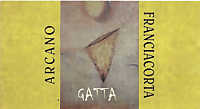
|
|
Franciacorta Brut Riserva Arcano 2000 |
|
| Gatta (Lombardy, Italy) | |
| Grapes: Chardonnay (80%), Pinot Noir (20%) | |
| Price: € 30,00 | Score: |
| Franciacorta Brut Riserva Arcano shows an intense golden yellow color and nuances of golden yellow, very transparent, fine and persistent perlage. The nose denotes intense, clean, pleasing and refined aromas which start with hints of apple, plum and bread crust followed by aromas of citrus fruits, banana, yeast, hazelnut, hawthorn and praline. The mouth has good correspondence to the nose, an effervescent and crisp attack, however balanced by alcohol, good body, intense flavors, pleasing roundness. The finish is persistent with flavors of apple, plum and hazelnut. Franciacorta Brut Riserva Arcano referments in bottle on its lees for 11 years. | |
| Food Match: Roasted fish, Roasted white meat, Mushroom soups, Stuffed pasta | |
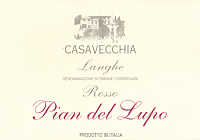
|
|
Langhe Rosso Pian del Lupo 2006 |
|
| Casavecchia (Piedmont, Italy) | |
| Grapes: Nebbiolo, Cabernet Sauvignon, Merlot | |
| Price: € 10.50 | Score: |
| Langhe Rosso Pian del Lupo shows a brilliant ruby red color and nuances of garnet red, little transparency. The nose denotes intense, clean, pleasing and refined aromas which start with hints of black cherry, black currant and plum followed by aromas of violet, blueberry, raspberry, vanilla, cocoa, cinnamon and menthol. The mouth has good correspondence to the nose, a properly tannic attack and however balanced by alcohol, good body, intense flavors, agreeable. The finish is persistent with flavors of black cherry, plum and black currant. Langhe Rosso Pian del Lupo ages for 14 months in barrique followed by at least 12 months of aging in bottle. | |
| Food Match: Roasted meat, Stewed and braised meat with mushrooms, Hard cheese | |
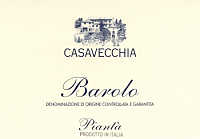
|
|
Barolo Piantà 2006 |
|
| Casavecchia (Piedmont, Italy) | |
| Grapes: Nebbiolo | |
| Price: € 21.50 | Score: |
| Barolo Piantà shows a brilliant ruby red color and nuances of garnet red, moderate transparency. The nose denotes intense, clean, pleasing and refined aromas which start with hints of cherry, plum and violet followed by aromas of raspberry, dried rose, vanilla, anise, cinnamon, cocoa, tobacco and menthol. The mouth has good correspondence to the nose, a tannic attack and however balanced by alcohol, good body, intense flavors, pleasing crispness. The finish is persistent with with flavors of cherry, plum and raspberry. Barolo Piantà ages for more than two years in cask followed by at least 18 months of aging in bottle. | |
| Food Match: Game, Roasted meat, Stewed and braised meat, Hard cheese | |
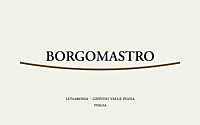
|
|
Borgomastro 2007 |
|
| Lunarossa (Campania, Italy) | |
| Grapes: Aglianico | |
| Price: € 34.50 | Score: |
| Borgomastro shows an intense ruby red color and nuances of garnet red, little transparency. The nose denotes intense, clean, pleasing, refined and elegant aromas which start with hints of black cherry, blackberry and violet followed by aromas of plum, vanilla, raspberry, blueberry, tobacco, pink pepper, mace, cocoa and menthol. The mouth has good correspondence to the nose, a tannic attack and however balanced by alcohol, full body, intense flavors, pleasing roundness. The finish is persistent with flavors of black cherry, blackberry and plum. Borgomastro ages for 24 months in cask followed by 12 months of aging in bottle. | |
| Food Match: Game, Roasted meat, Stewed and braised meat, Hard cheese | |
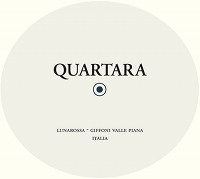
|
|
Quartara 2009 |
|
| Lunarossa (Campania, Italy) | |
| Grapes: Fiano | |
| Price: € 24.50 | Score: |
| Quartara shows an intense golden yellow color and nuances of golden yellow, very transparent. The nose reveals intense, clean, pleasing, refined and elegant aromas which start with hints of apple, plum and hazelnut followed by aromas of honey, ripe peach, almond, vanilla, candied fruits, orange, anise, hawthorn and mineral. The mouth has excellent correspondence to the nose, a crisp attack and however balanced by alcohol, good body, intense flavors, agreeable. The finish is very persistent with long flavors of apple, plum and hazelnut. Quartara ferments and ages for 3 months in amphora, followed by 9 months of aging in cask and 6 months in bottle. | |
| Food Match: Stuffed pasta with fish, Roasted fish, Roasted white meat, Mushroom soups | |
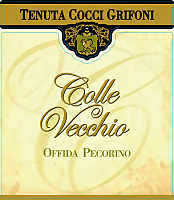
|
|
Offida Pecorino Colle Vecchio 2011 |
|
| Tenuta Cocci Grifoni (Marches, Italy) | |
| Grapes: Pecorino | |
| Price: € 10.50 | Score: |
| Offida Pecorino Colle Vecchio shows an intense greenish yellow color and nuances of greenish yellow, very transparent. The nose reveals intense, clean, pleasing and refined aromas that start with hints of pear, peach and apple followed by aromas of medlar, plum, pineapple, chamomile, hawthorn, hazelnut and broom. The mouth has good correspondence to the nose, a crisp attack and however balanced by alcohol, good body, intense flavors, agreeable. The finish is persistent with flavors of apple, peach and pear. Offida Pecorino Colle Vecchio ages for at least 4 months in steel tanks followed by at least 6 months of aging in bottle. | |
| Food Match: Pasta with fish, Mushroom soups, Sauteed white meat | |
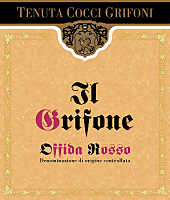
|
|
Offida Rosso Il Grifone 2006 |
|
| Tenuta Cocci Grifoni (Marches, Italy) | |
| Grapes: Montepulciano (70%), Cabernet Sauvignon (30%) | |
| Price: € 19.50 | Score: |
| Offida Rosso Il Grifone shows a deep ruby red color and nuances of garnet red, little transparency. The nose reveals intense, clean, pleasing, refined and elegant aromas that start with hints of plum, black cherry and black currant followed by aromas of violet, blueberry, blackberry, vanilla, tobacco, chocolate, cinnamon and eucalyptus. The mouth has good correspondence to the nose, a tannic attack and however balanced by alcohol, full body, intense flavors, agreeable. The finish is persistent with flavors of black cherry, plum and black currant. Offida Rosso Il Grifone ages for 30 months in cask followed by at least 12 months of aging in bottle. | |
| Food Match: Game, Roasted meat, Stewed and braised meat, Hard cheese | |
News |
|
In this section are published news and information about events concerning the world of wine and food. Whoever is interested in publishing this kind of information can send us a mail to our address.
|
AquavitaeReview of Grappa, Distillates and Brandy |
|
|
| Distillates are rated according to DiWineTaste's evaluation method. Please see score legend in the "Wines of the Month" section. |
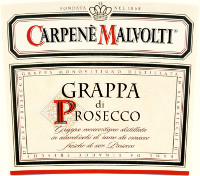
|
|
Grappa di Prosecco |
|
| Carpenè Malvolti (Veneto, Italy) | |
| Raw matter: Pomace of Prosecco | |
| Price: € 15.00 - 50cl | Score: |
| This Grappa di Prosecco is limpid, colorless and crystalline. The nose reveals intense clean, pleasing and refined aromas of pear, apple, wistaria, pineapple, hazelnut and peach, with almost imperceptible alcohol pungency. In the mouth has intense flavors with perceptible alcohol pungency which tends to dissolve rapidly, good correspondence to the nose, balanced sweetness, agreeable. The finish is persistent with flavors of pear, peach and apple. This grappa is produced with a batch steam alembic still. | |
Wine Parade |
|
|
| The best 15 wines according to DiWineTaste's readers. To express your best three wines send us an E-mail or fill in the form available at our WEB site. |
| Rank | Wine, Producer | |
|---|---|---|
| 1 |
| Batàr 2008, Querciabella (Italy) |
| 2 |
| Gran Masetto 2007, Endrizzi (Italy) |
| 3 |
| Adarmando 2009, Tabarrini (Italy) |
| 4 |
| Collio Sauvignon Ronco delle Mele 2010, Venica (Italy) |
| 5 |
| Franciacorta Pas Dosé Récemment Dégorgé 2006, Cavalleri (Italy) |
| 6 |
| Brunello di Montalcino 2006, Siro Pacenti (Italy) |
| 7 |
| Sagrantino di Montefalco Collepiano 2007, Arnaldo Caprai (Italy) |
| 8 |
| Barolo Cannubi Boschis 2005, Sandrone (Italy) |
| 9 |
| Avvoltore 2009, Moris Farms (Italy) |
| 10 |
| Brunello di Montalcino Vigneto Manachiara 2005, Tenute Silvio Nardi (Italy) |
| 11 |
| Trento Talento Brut Riserva 2007, Letrari (Italy) |
| 12 |
| San Leonardo 2006, Tenuta San Leonardo (Italy) |
| 13 |
| Confini 2007, Lis Neris (Italy) |
| 14 |
| Rosso Conero Riserva Grosso Agontano 2007, Garofoli (Italy) |
| 15 |
| Arkezia Muffo di San Sisto 2004, Fazi Battaglia (Italy) |
| |||||||
Privacy Policy | |||||||


| Copyright © 2002-2024 Antonello Biancalana, DiWineTaste - All rights reserved |
| All rights reserved under international copyright conventions. No part of this publication and of this WEB site may be
reproduced or utilized in any form or by any means, electronic or mechanical, without permission in writing from DiWineTaste. |